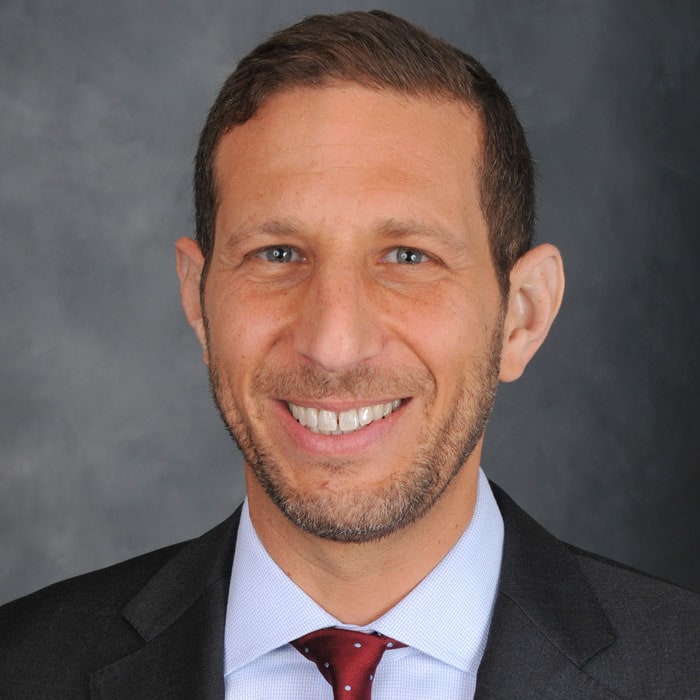Leadership has been saved

Leadership Why a perennial issue?
28 February 2015
If nearly every company recognizes that developing leaders is a critical talent problem, why are so few companies making progress in addressing it?
- Organizations around the world are struggling to strengthen their leadership pipelines, yet over the past year businesses fell further behind, particularly in their ability to develop Millennial leaders.
- Eighty-six percent of all surveyed HR and business leaders cite leadership as one of their most important challenges.
- A focus on leadership at all levels, coupled with consistent year-over-year spending in this area, is key to building sustainable performance and engaging employees in the new world of work.
EXPLORE
Create and download a custom PDF of the Human Capital Trends 2015 report.
Why is leadership a perennial issue?
For the third year in a row, leadership soared to become one of the most pressing talent challenges faced by global organizations. Nearly 9 out of 10 global HR and business leaders (86 percent) cited leadership as a top issue. Fully 50 percent of respondents in our survey rated their leadership shortfalls as “very important.” Yet only 6 percent of organizations believe their leadership pipeline is “very ready”—pointing to a staggering capability gap. (See figure 1 for capability gaps across regions and selected countries). Respondents’ overall capability gap in leadership, which has grown in magnitude since last year (figure 2),1 is striking, considering that leadership program spending has increased compared to last year.2

If nearly every company recognizes leadership as a critical talent problem, why are so few companies making any progress in addressing it?
The short answer is that many companies treat leadership sporadically, confining development to a select few employees, failing to make long-term investments in leadership, and neglecting to build a robust leadership pipeline at all levels. For all the talk about leadership as a CEO-level priority, too many companies do not consistently invest in this area. Issues that hold back effective leadership development include:
- Leadership for the few, not the many: At the top of the corporate pyramid, fewer than 50 percent of C-suite executives feel they are receiving any development at all.3 Meanwhile, lower down in the organization, just 6 percent of survey respondents report they have “excellent” programs in place to develop Millennials. This is despite the fact that 53 percent of Millennials aspire to become the leader or senior executive of their own organization.4
- Lack of consistent investment: Many organizations view leadership as a short-term training program or series of episodic events that are funded one year but not the next. Companies that “get it” (GE, for example) invest in developing leaders during good times and bad rather than treating it as a luxury they can only afford in strong years. In fact, research shows that high-performing companies spend 1.5 to 2 times more on leadership than other companies, and reap results that are triple or quadruple the levels of their competitors.5
- A weak leadership pipeline: Unless developing leadership is treated as an ongoing, strategic initiative by HR and the business, leadership pipelines will be weak and potentially impact the ability of the business to deliver on its strategy. Recent research shows that only 32 percent of organizations have a steady supply of leaders at the top levels, while only 18 percent regularly hold their leaders accountable to identify and develop successors.6 Only 10 percent of respondents to this year’s survey believe they have an “excellent” succession program, and 51 percent state that their programs are weak or have none at all.
Faced with these challenges, organizations often believe they can simply “buy” a solution to develop leaders. Off-the-shelf leadership development solutions are fragmented and of inconsistent quality. With so many models and approaches—from large firms to business schools to boutiques—it is hard for many companies to architect the tailored yet integrated experiences they need.
With so many models and approaches—from large firms to business schools to boutiques—it is hard for many companies to architect the tailored yet integrated experiences they need.
 Despite these challenges, new data-driven tools offer innovative approaches to help accelerate leadership by better assessing leadership qualities, understanding career patterns of successful leaders, and learning what development works best. For example, companies can now look at talent movement data and use people analytics to see which job experiences and backgrounds produce the best leaders. They can then target training that best prepares leaders to learn from this experience, and use assessment tools to measure capability uplift and readiness for the next level.
Despite these challenges, new data-driven tools offer innovative approaches to help accelerate leadership by better assessing leadership qualities, understanding career patterns of successful leaders, and learning what development works best. For example, companies can now look at talent movement data and use people analytics to see which job experiences and backgrounds produce the best leaders. They can then target training that best prepares leaders to learn from this experience, and use assessment tools to measure capability uplift and readiness for the next level.
As the global economy gathers momentum, companies need to seize this opportunity to transform their leadership development programs from a perennial question mark to a source of strategic strength.
Lessons from the front lines
In late 2012, T-Mobile was on the edge. In addition to having experienced the turmoil of an unconsummated merger with AT&T in 2011, the company had difficulty differentiating itself in a hyper-competitive sector and competing at scale against much larger competitors. While profitable, it was losing customers at an alarming rate. It also had a great, collaborative culture, but was not able to capitalize on its key strengths to disrupt the status quo.
John Legere, T-Mobile’s new CEO, had decided to shake up the industry. Starting in early 2013, Legere and the senior leadership team rapidly introduced their “Un-carrier” strategy in a series of bold moves that created first-mover advantage and took the industry by surprise. This series of quickly unfolding events, which continued throughout 2014, put in motion a transformation not only in the industry, but also within the company. By definition, things needed to change on the inside if they were to change outside.
One element of this internal transformation was to rethink the way the company’s people were managed. “The combined HR leadership team knew we needed to look hard at all our people practices, so we started with a fresh sheet of paper and a focus on next practices, not best practices,” said Ben Bratt, VP HR and head of talent and organization capability. “We knew that our managers had to embody Un-carrier in everything they did, but we had little to offer them on their journey to a new set of leadership capabilities. And we didn’t want to recreate the past. We wanted to build toward the future.”
T-Mobile decided early on to recreate a significant focus on first- and second-line leadership, and to radically rethink mothballed high-potential efforts. “Sometimes, you have to pause to go fast,” said Melissa Davis, director of leadership and organization development. “We focused on a six-week ‘dash’ to get crystal clear on the new capabilities needed, and we rapidly developed a new framework and strategy that drove toward core elements like customers, goal setting, coaching, development, and engagement. These capabilities are now the underpinning of all leadership development.”
To help shape the new, empowering culture in a way reflective of the Un-carrier spirit, T-Mobile embarked on a series of leadership investments, including:
- A high-potential program aimed at getting directors ready for VP roles
- A “dead simple” 360-feedback tool that aligned with the new leadership framework, with real-time support for selected directors to take action on the feedback
- A new, high-octane two-day “manager mastery” program for frontline managers
“We are taking a new approach to developing our 4,500 first- and second-line leaders,” said Bratt. “These leaders and their teams touch more than 1.5 million customers each year, so we need them to inspire their teams to produce great results and deliver world-class customer service at each ‘moment of truth.’ By focusing on leadership at all levels, we know we can continuously transform the teams that work with our customers, delivering the industry’s leading service, support, and quality care with the Un-carrier spirit.”
This “clean sheet of paper” approach to leadership development and the emerging momentum in the talent development space has dovetailed with similar redesign efforts across all HR groups. From paring down and overhauling approaches to performance management, to creating radical transparency in the hiring process, to giving employees an “always on” voice that managers can immediately mine for valuable insights, T-Mobile is equipping managers to lead the Un-carrier revolution.
Where companies can start
- Start with commitment to leadership development from the top: Without CEO ownership, leadership development will likely never be a long-term commitment. Engage top executives to maintain a continuous investment in leadership development.
- Answer the question: Leadership for what? Begin a conversation about your top business priorities. Then, build a capability framework for selection, assessment, development, and succession that defines the leadership you need for today and tomorrow. Keep the model simple—it should be your “language for leadership” across the enterprise.
- Develop inclusive leaders at all levels: While many executives worry about top leadership, mid-level and first-level leaders actually operate the company and are the future strategic leaders of the organization. They also interact with customers every day. Capable and engaging managers and supervisors can drive performance, foster engagement, and increase retention. This requires focusing on growing segments of leaders such as Millennials, global leaders, and women—and tailoring development to their unique needs and preferences.
- Make talent development and succession a priority: Reward leaders for developing successors and sharing talent. Without a process to seed and feed the pipeline with the best, most diverse talent, your leadership investments will not deliver value.
- Develop or leverage a capability model: Build a framework for assessment, development, and coaching. New models are now available, but companies can benefit by keeping the model simple and focusing on implementing leadership models and programs.
- Extend boundaries to create new leadership development opportunities: Work with business partners, universities, non-governmental organizations, and other third-party organizations to create a range of new leadership experiences, including pro bono and community service projects.
Bottom line
In today’s competitive business environment and rapidly evolving world of work, organizations must continuously develop a robust portfolio of leaders who are ready to engage employees, push forward growth strategies, drive innovation, and work directly with customers. Companies that fail to invest continuously in the leaders of tomorrow may find themselves falling behind their competitors.
© 2021. See Terms of Use for more information.



